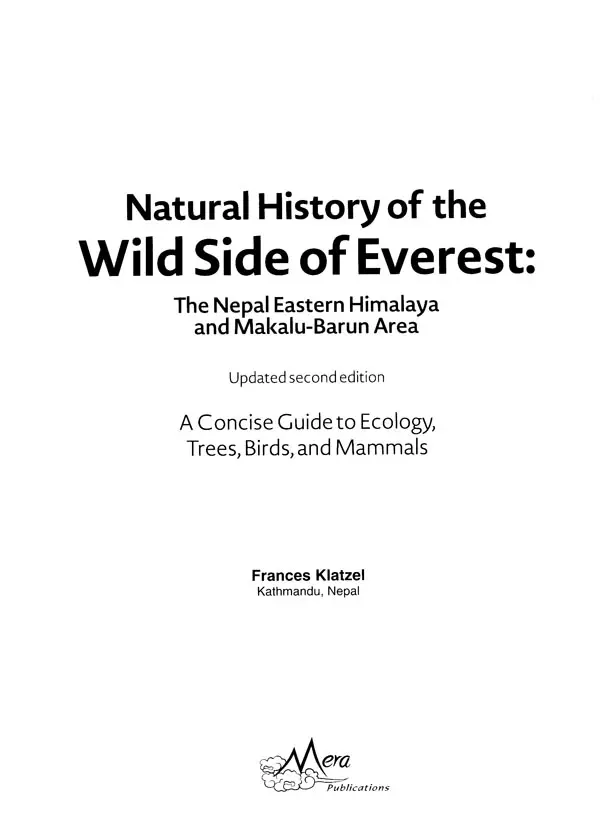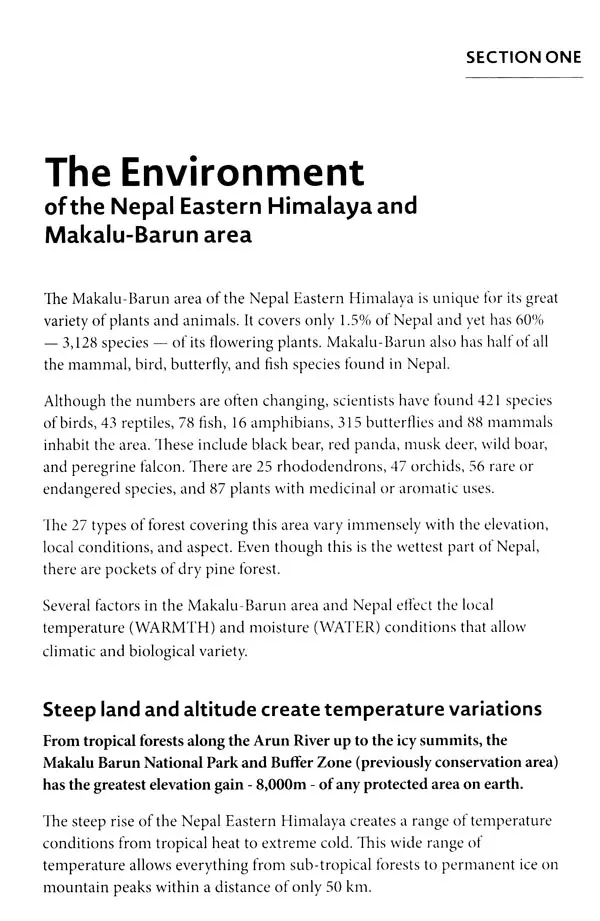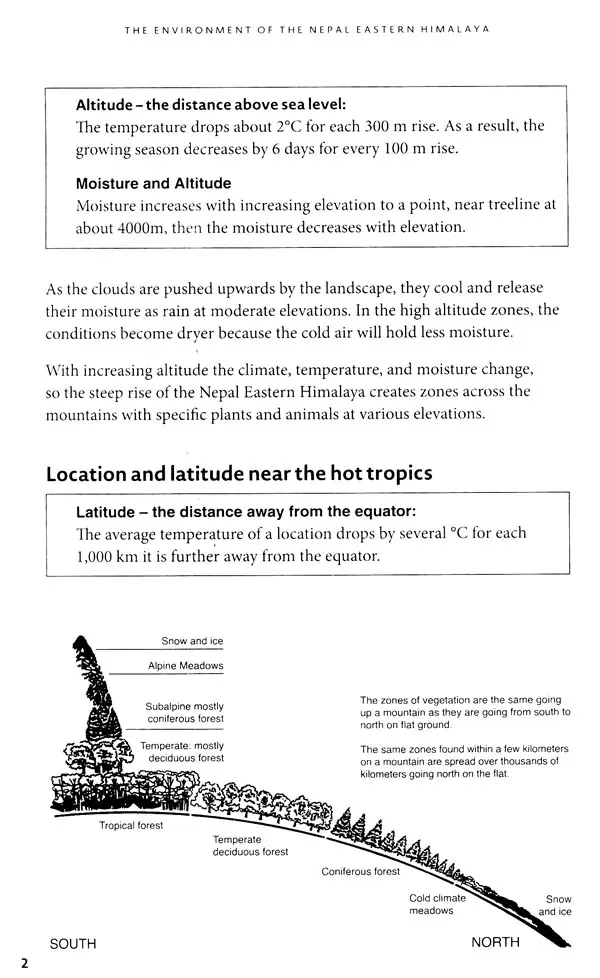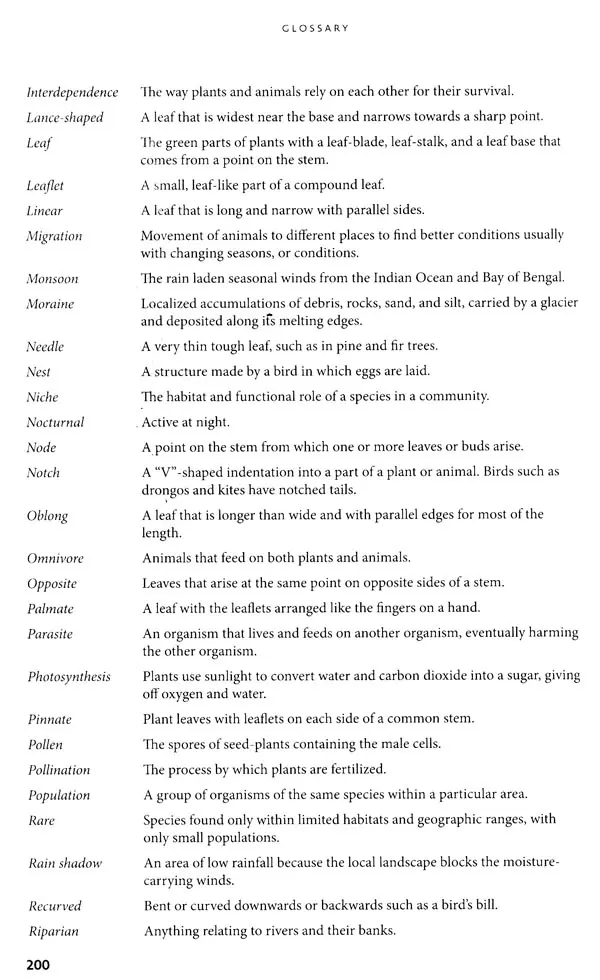
Natural History of the Wild Side of Everest: The Nepal Eastern Himalaya and Makalu-Barun Area (A Concise Guide to Ecology, Trees, Birds and Mammals)
Book Specification
| Item Code: | UAJ389 |
| Author: | Frances Klatzel |
| Publisher: | Mera Publications Pvt. Ltd. |
| Language: | English |
| Edition: | 2020 |
| ISBN: | 9789937088985 |
| Pages: | 214 (Throughout Color and B/w Illustrations) |
| Cover: | PAPERBACK |
| Other Details | 8.50 X 5.50 inch |
| Weight | 350 gm |
Book Description
Mountains give livelihoods for the tough, self-reliant people who live in these communities. These mountain people and communities are not the just beneficiaries of the wealth provided by mountains. They are the stewards and caretakers of mountains, helping to sustain the mountains and their ecosystems. To protect, defend, and advocate for mountains, one must know more about the processes that formed the mountains and shaped their unique characteristics, about the species they house in the essential ecosystems services they provide. The first edition of this book was an endeavor to fill this gap. This second edition follows that approach.
In 2001, no other book on natural history in Nepal targeted both local people and visitors. The first edition published in 2001 took two years to collect, assemble, and produce. Two decades later, this book is still relevant as the second edition is a unique contribution to Nepal's natural history, and helps the reader understand the geology and processes that formed the Eastern Himalaya, and how those processes helped shape the biodiversity and species that inhabit this extraordinary environment.
Written in clear language and superbly illustrated, the book details the geology and plant and animal diversity of Makalu Barun national Park And Buffer Zone, one treasure in Nepal's protected area network. Given the region's immense biodiversity, the book is not a comprehensive database, but a representative sampling of the National Park's ecosystems.
Broken down by altitude, the reader literally "walks" upwards, exploring the ever-changing natural biodiversity as the ecology and biodiversity changes as they gain altitude. This is a unique approach as this National Park ranges from 400 meters to over 8,500 meters in altitude in just over 100 kilometers as the crow flies, one of the most diverse areas on the planet.
As an original promoter and supporter of the first edition book, I am thrilled to invite the next generation of readers to explore this wonderful place through this book and learn more about the ecology of Makalu Barun National Park. Hopefully it will help local communities, trekkers and armchair travelers better understand this wonderful national park and its ecology and inspire future conservationists, local and international.
Down-cutting by the Arun River and uplift of the Himalaya created this incredibly steep landscape. This old river originated to the north of what became the Himalaya. For millions of years, it flowed southward before and . During the uplift of the Himalaya. As the terrain rose over eons with the uplift Of the mountains, the river kept down-cutting, amplifying the vast elevation difference.
Because of this steep terrain, the Makalu-Barun area has almost every bioclimatic zone of eastern Nepal and 27 distinct forest types. This creates the immense diversity of plants, animals, and human cultures in the area. Two decades ago, the key focus in conservation was biodiversity, but since then, climate change and its impacts have entered the list of priorities. The importance of these contiguous forests from the lower elevations to the higher elevations might be that they would enable species to migrate to cooler environments as average temperatures increase. An example of this was a tiger spotted at 2,300 metres in January 2021. Uninterrupted forests from the Terai lowlands to the high ridges enabled the tiger to migrate for unknown reasons but possibly in search of new habitat.
The Project
This field guide and Natural History Handbook originated as a staff training manual for the Makalu-Barun conservation project implemented from 1991 to 1998. The project area around Mount Makalu and the Barun Valley of north-eastern Nepal represents an intact, but threatened, ecosystem in an area of globally significant biodiversity, the eastern Himalaya.
The idea for the project evolved from a quest for the Yeti in the remote Barun Valley in 1983. If there is anywhere where creature like the Yeti might exist, it is in the remote river valleys surrounding Makalu. Such a creature exists in the minds of all mountain people, in many mountain cultures. With wild places that might harbor the Yeti being threatened in mountains everywhere, the world is richer if the possibility of the Yeti still exists.
The original aim of this Handbook was to help staff, visitors, and local people understand the environment and species, to make more and better observations of wildlife, vegetation, ecosystems to help monitor the ecosystems of the Makalu- Barun area.
This field guide presents only a sample of the great variety of plants and animals living in this incredible region and explains the factors that create the range of conditions allowing such diversity. Although we prepared the Handbook for the Makalu- Barun area, it applies to most other areas of the Nepal Eastern Himalaya.
Book's Contents and Sample Pages













